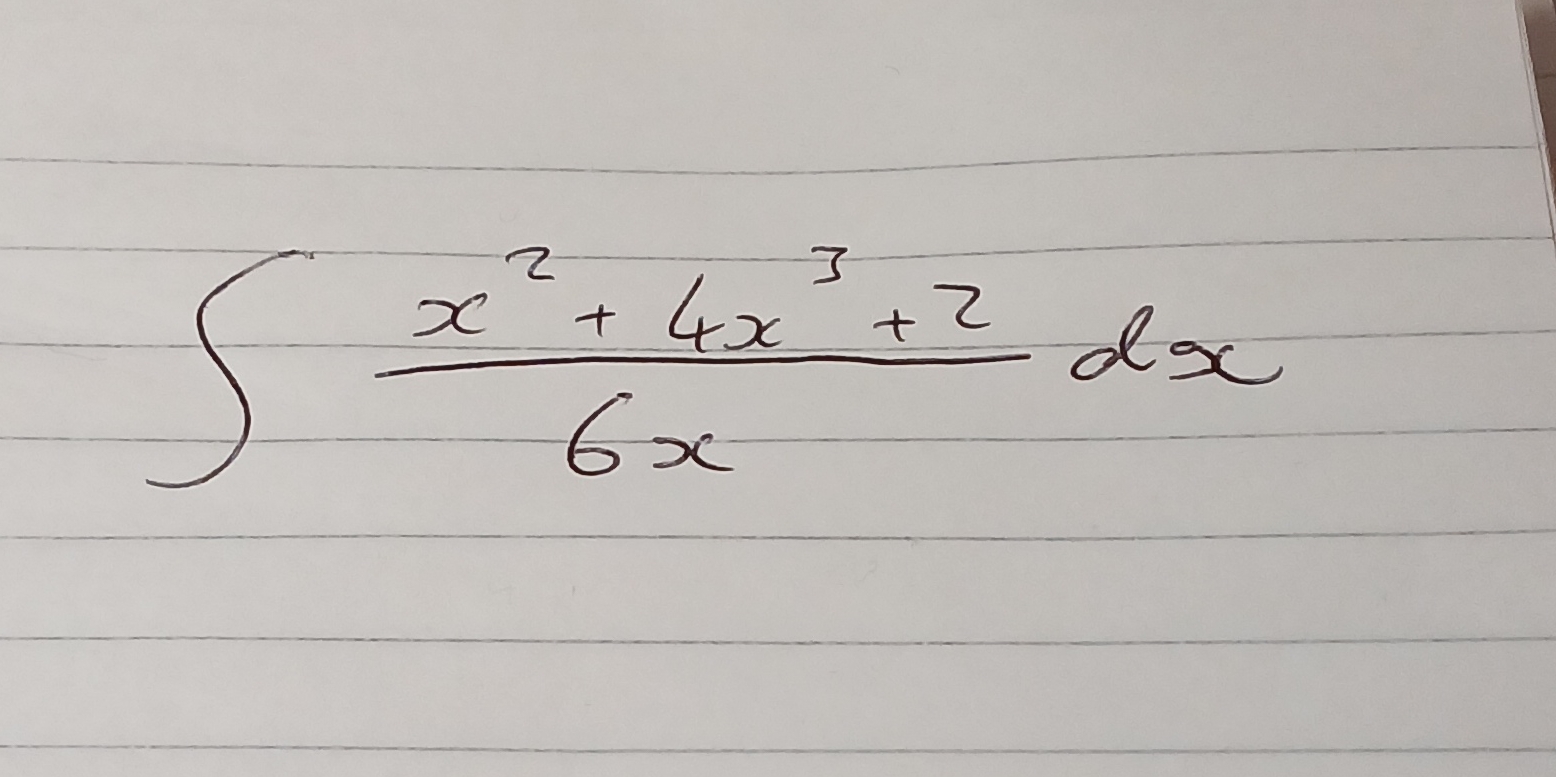∫(x² + 4x³ + 2)/(6x) dx

Understand the Problem
The question involves an integral calculus problem where we need to evaluate the integral of a rational function. The function is given as (x² + 4x³ + 2) / (6x) with respect to x. To solve this, we will simplify the expression and then integrate it term by term.
Answer
$$ \frac{x^2}{12} + \frac{2x^3}{9} + \frac{1}{3} \ln |x| + C $$
Answer for screen readers
The integral is:
$$ \frac{x^2}{12} + \frac{2x^3}{9} + \frac{1}{3} \ln |x| + C $$
Steps to Solve
- Simplify the Expression
We start by simplifying the rational function. The expression is given as:
$$ \frac{x^2 + 4x^3 + 2}{6x} $$
We can separate the terms in the numerator:
$$ \frac{x^2}{6x} + \frac{4x^3}{6x} + \frac{2}{6x} $$
This simplifies to:
$$ \frac{x}{6} + \frac{2}{3}x^2 + \frac{1}{3x} $$
- Set Up the Integral
Now we want to integrate the simplified expression:
$$ \int \left( \frac{x}{6} + \frac{2}{3}x^2 + \frac{1}{3x} \right) dx $$
- Integrate Each Term
We will integrate each term separately:
- For the first term:
$$ \int \frac{x}{6} , dx = \frac{1}{6} \cdot \frac{x^2}{2} = \frac{x^2}{12} $$
- For the second term:
$$ \int \frac{2}{3}x^2 , dx = \frac{2}{3} \cdot \frac{x^3}{3} = \frac{2x^3}{9} $$
- For the third term:
$$ \int \frac{1}{3x} , dx = \frac{1}{3} \ln |x| $$
- Combine the Results
Now we combine all the results of the integration and add the constant of integration ( C ):
$$ \int \frac{x^2 + 4x^3 + 2}{6x} , dx = \frac{x^2}{12} + \frac{2x^3}{9} + \frac{1}{3}\ln |x| + C $$
The integral is:
$$ \frac{x^2}{12} + \frac{2x^3}{9} + \frac{1}{3} \ln |x| + C $$
More Information
This result provides the antiderivative of the given rational function. Understanding integration of rational functions is fundamental in calculus and can apply to various real-world problems, such as calculating areas and solving differential equations.
Tips
- Forgetting to simplify: Always simplify the expression before integrating; it makes the integration process easier.
- Incorrect integration constants: Be sure to include the constant of integration ( C ) at the end of the result as it represents the family of antiderivatives.
AI-generated content may contain errors. Please verify critical information